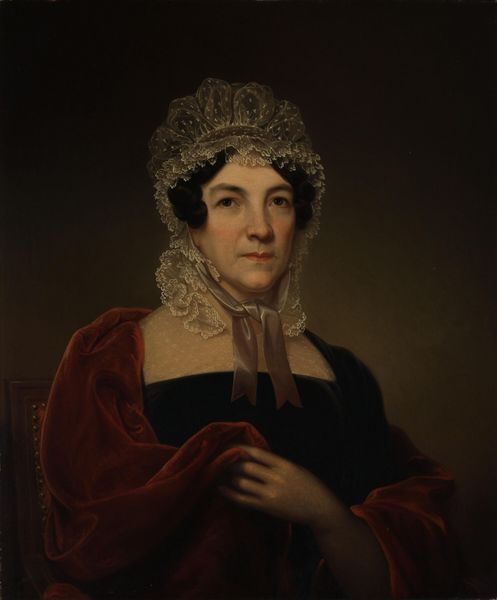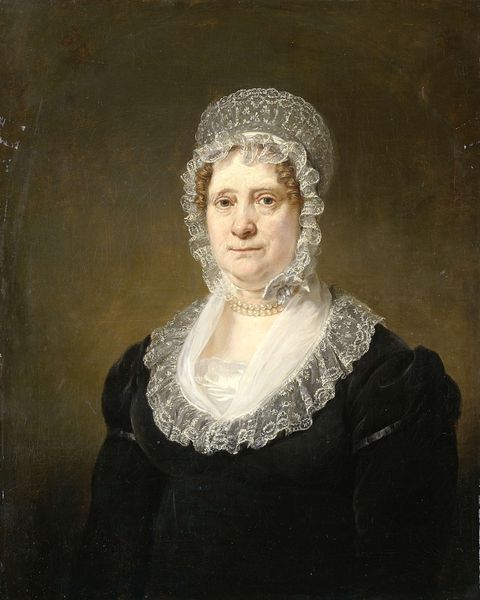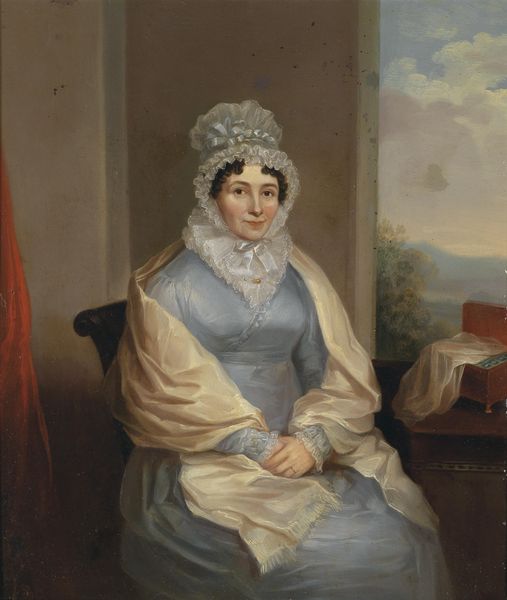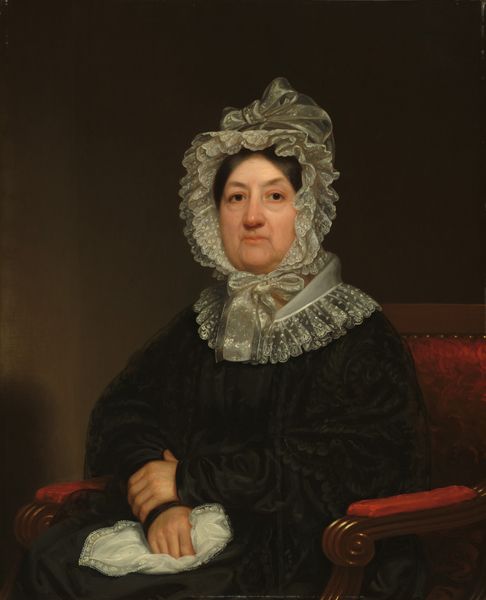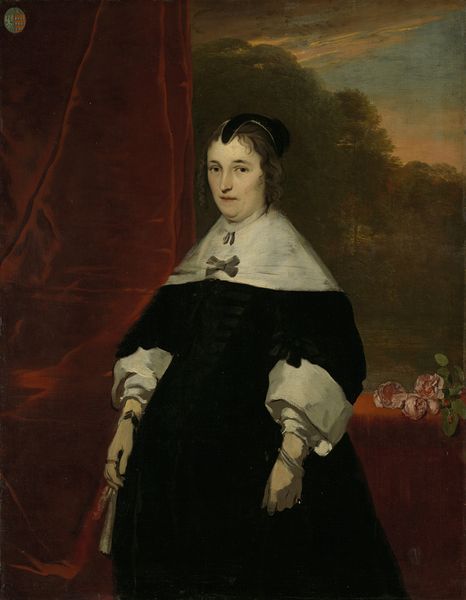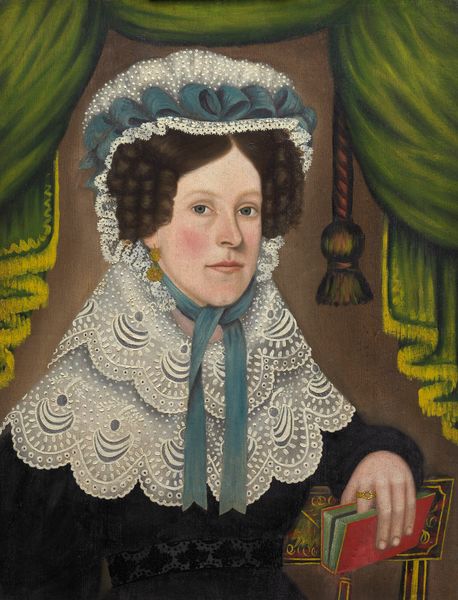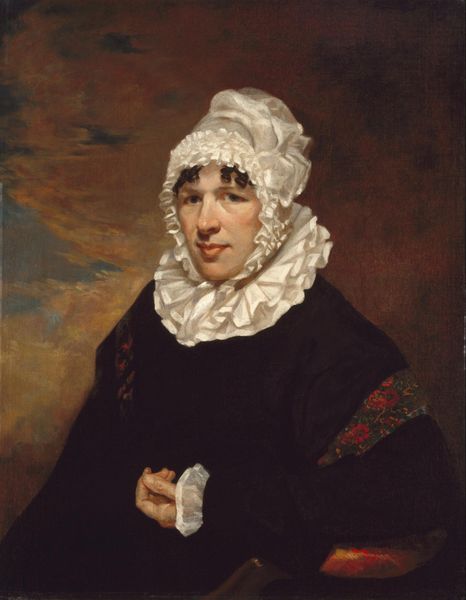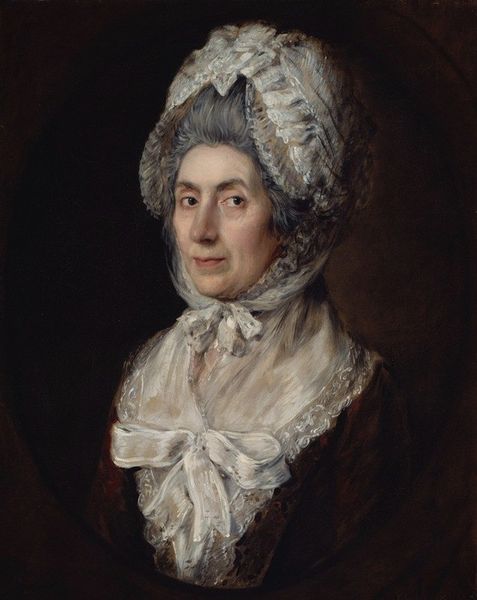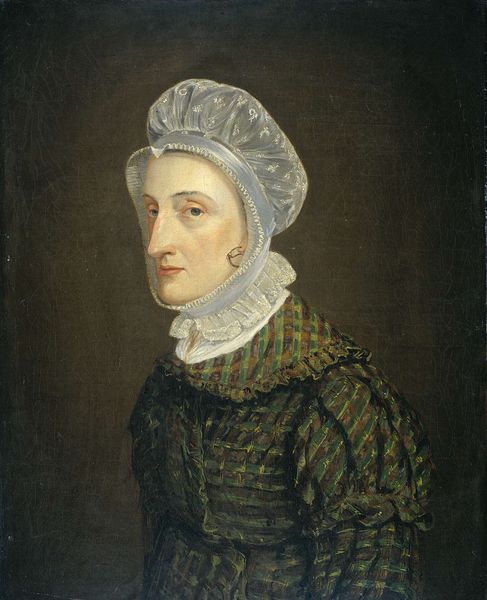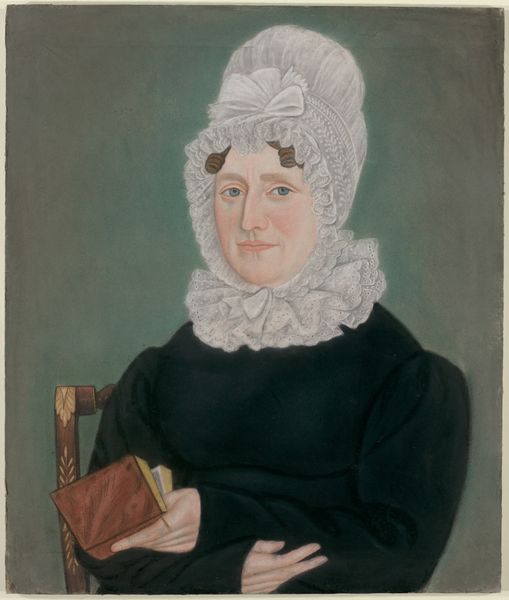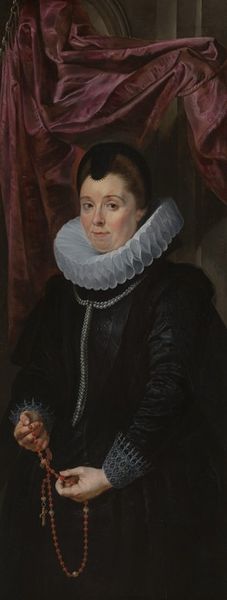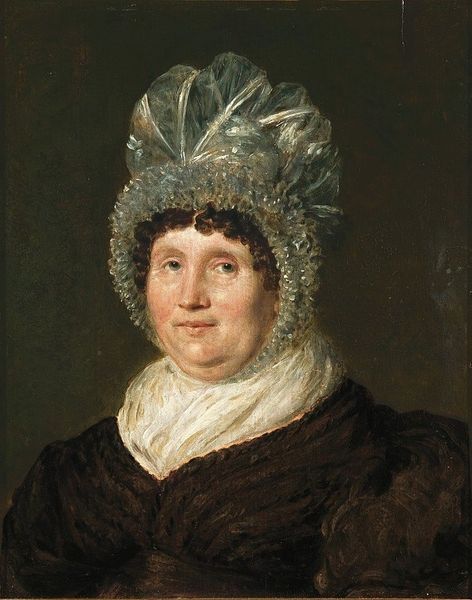
painting, oil-paint
#
portrait
#
painting
#
oil-paint
#
classicism
#
romanticism
#
history-painting
#
academic-art
Dimensions: height 61.2 cm, width 52.3 cm, thickness 1.3 cm, depth 9 cm
Copyright: Rijks Museum: Open Domain
Curator: Welcome. We're standing before an oil painting titled "Portrait of Ann Brander (died 1837), Wife of Job Seaburne May," created in 1823 by Jan Willem May. Editor: The muted color palette creates such a somber mood, doesn't it? Her dark dress contrasted against the stark white lace—the artist’s attention to texture is exquisite. Curator: Absolutely. It's important to situate Ann Brander within her context. As the wife of a prominent figure, her portrayal reflects not only individual likeness, but also the societal expectations placed upon women of her station. Her clothing, while refined, speaks of modesty and restraint, qualities valued in women of the early 19th century. Editor: Agreed. Look how the composition directs our eyes—the lines lead directly to her face, the undeniable focal point. Her serene expression dominates, carefully framed by the ornate lace. Do you perceive a hint of reserve or perhaps… sadness? Curator: I interpret that as the dignity expected from her. But the downward gaze can also symbolize a woman bound by patriarchal structures. We must consider gender roles and power dynamics in relation to Ann’s personal story. Editor: True, though it seems she commands her space. There's undeniable precision in the symmetry and in the distribution of light. It's almost sculptural. Curator: Yet, let’s not forget the socio-economic realities. Portraiture like this was a status symbol. Commissioning such a piece broadcasted the family's wealth and standing, solidifying their place within the social hierarchy. This work reflects intersectional experiences tied to gender, class, and historical position. Editor: Perhaps, but it's also quite masterfully constructed; you can easily decode May’s artistic training. I also admire the almost flawless texture in that cross that she’s wearing, quite remarkable for the time. Curator: This dialogue reveals how different interpretations coexist. While one approach dives deep into power structures, the other brings a concentrated look on materiality, but it still creates some great ideas about this image. Editor: Indeed. Examining through different perspectives shows how dynamic the dialogue surrounding a single work can be, illuminating its various layers of meaning and aesthetics.
Comments
No comments
Be the first to comment and join the conversation on the ultimate creative platform.
